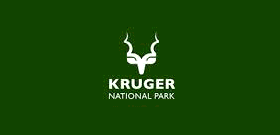 Kruger National Park Retains Its Name: DFFE Quashes Rumours, Stresses Legal Process
Kruger National Park Retains Its Name: DFFE Quashes Rumours, Stresses Legal Process
The Kruger National Park continues to stand as one of Africa’s premier wildlife destinations, with South African authorities firmly dismissing recent speculation about a possible name change. The Department of Forestry, Fisheries and the Environment (DFFE) has unequivocally stated that no official process has commenced to alter the park’s name, reinforcing both the legal and historical standing of this renowned sanctuary.
Amidst widespread discussion in the media and across social platforms, the DFFE has moved swiftly to clarify the facts. According to the Department, not only has there been no amendment or governmental approval to change the name, but crucially, no notice has been published in the Government Gazette under Section 20 of the National Environmental Management: Protected Areas Act 57 of 2003. Legally and officially, the park remains the Kruger National Park, a name recognized globally and synonymous with African wildlife tourism.
Minister of Environment, Forestry and Fisheries, Dr Dion George, reinforced this message, stating, “There is nothing in progress to change the name of the Kruger National Park, and I certainly have no intention of approving any request.” Under the provisions of the Protected Areas Act, the exclusive authority to assign or amend the name of a national park rests with the Minister. At present, Schedule 2 of the Act specifically lists the Kruger National Park under Item 11 as one of South Africa’s official national parks. Any future initiative to review or modify this name would require a comprehensive legislative process, including public consultation and formal publication in the Government Gazette—a process that, the DFFE affirms, has not been initiated.
The Department has also issued a caution to the public, media outlets, and social media communities, urging them to refrain from disseminating unverified claims about a possible name change. According to the DFFE, the spread of inaccurate information not only erodes public confidence but also detracts from the essential mission of conserving South Africa’s wildlife and natural habitats. Citizens, stakeholders, and the broader tourism community are encouraged to rely exclusively on official government communications for updates on matters of such significance.
Kruger National Park: Enduring Symbol of African Conservation
Since its establishment in 1926, the Kruger National Park has grown into a cornerstone of African wildlife heritage. Spanning nearly 20,000 square kilometres of unspoiled bushveld across the Limpopo and Mpumalanga provinces, the park offers an unparalleled window into the continent’s natural splendour. It is famed for its population of the Big Five—lion, leopard, elephant, rhino, and buffalo—and is also home to over 500 bird species, making it a magnet for nature enthusiasts, researchers, and wildlife photographers from across the globe.
The park’s ecological diversity supports not only rare and endangered species but also a complex network of flora and fauna, ensuring that each visit is unique. Its infrastructure—comprising well-maintained roads, rest camps, and guided safari experiences—has been developed to accommodate both international tourists and local visitors, creating a sustainable model for conservation-based tourism.
Tourism Impact and Regional Significance
For African tourism professionals, the continued stability and recognition of the Kruger National Park brand is of critical importance. As one of South Africa’s most visited attractions, the park draws millions annually, underpinning jobs and supporting a wide range of businesses from accommodation providers to tour operators and local communities. Its enduring appeal is a testament to the careful stewardship by both government and conservation partners, who have worked to balance visitor access with ecological protection.
The park’s status as a global icon has positioned it at the heart of South Africa’s tourism economy, contributing significantly to national GDP and offering a platform for regional tourism integration. For the travel sector across sub-Saharan Africa, Kruger serves as both a benchmark for sustainable park management and a source of inspiration for developing new wildlife and ecotourism products. Its proximity to other Southern African highlights—such as Mozambique’s coastline and Zimbabwe’s Victoria Falls—enables seamless multi-destination itineraries, broadening the continent’s appeal to international travellers.
Legal Framework: Protecting Heritage and Consistency
The legal protections afforded by the Protected Areas Act are designed to safeguard the integrity of national parks like Kruger. By requiring that any name changes undergo a formal, transparent process—including public participation and government oversight—the Act ensures that decisions affecting these treasured assets are made with due consideration for their history, significance, and ongoing role in conservation. This level of oversight not only reassures the public but also provides certainty for tourism businesses reliant on the park’s established global recognition.
Looking Forward: Stability Amid Change
In a continent where tourism trends and consumer expectations are constantly evolving, the reassurance that Kruger National Park’s name, brand, and legal status remain intact is welcome news for the sector. As misinformation can quickly spiral in the digital age, clear and accurate communication from government sources is essential for maintaining trust among both travellers and industry stakeholders.
The Kruger National Park’s story highlights the importance of heritage, legal clarity, and transparent governance in supporting Africa’s tourism future. For those invested in the region’s travel economy, the message is clear: the park will continue to serve as a beacon for wildlife enthusiasts, a pillar of conservation, and a reliable partner for tourism growth.
With its name secured and its legacy protected, the Kruger National Park remains not only a jewel in South Africa’s crown but also a symbol of what is possible when tradition, stewardship, and forward-thinking policy work hand in hand. For the African travel sector, this stability opens the door for continued innovation, new partnerships, and sustained visitor interest well into the future.
